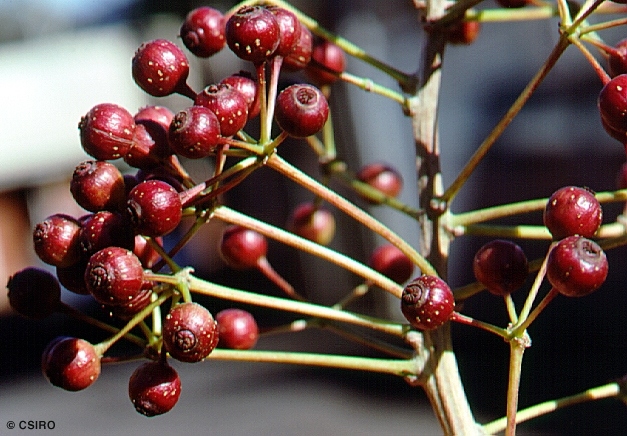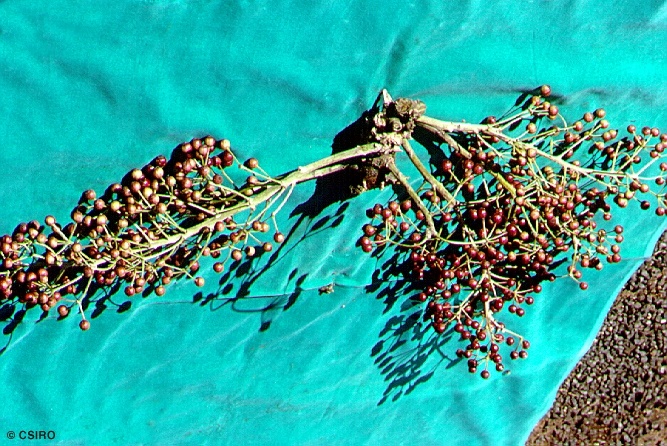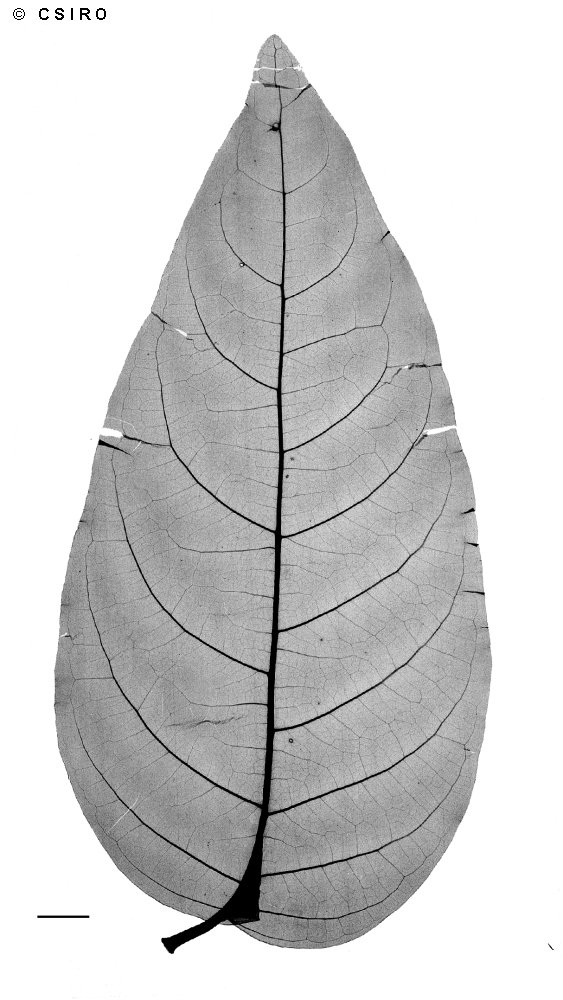Australian Tropical Rainforest Plants - Online edition
Polyscias spectabilis (Harms) Lowry & G.M.Plunkett





Lowry, P.P. & Plunkett, G.M. (2010) Plant Diversity and Evolution 128(1-2): 74-75.
Inflorescence about 100-300 cm diam., produced in forks well below the leaves. Flowers in umbels of 5-12 flowers. Calyx smooth, not toothed. Petals 6-12, very fleshy. Stamens about 25-65, filaments short. Ovary about 10-20-celled with an equal number of styles.
Features not available.
Occurs in NEQ, known only from collections made in the Bloomfield-Rossville area. Altitudinal range not known, but collected at 200 m. Grows in disturbed areas in lowland and upland rain forest. Also occurs in Papua New Guinea, Bismark Islands, New Ireland and the Solomon Islands.
Possibly the largest araliad known. The vegetative shoots arise in pairs or whorls from below the terminal inflorescence buds. Several flushes of growth occur as an inflorescence bud matures so that at anthesis the inflorescences are situated in forks well below the leafy crown with a succession of younger inflorescence buds in higher forks. Philipson (1979).





